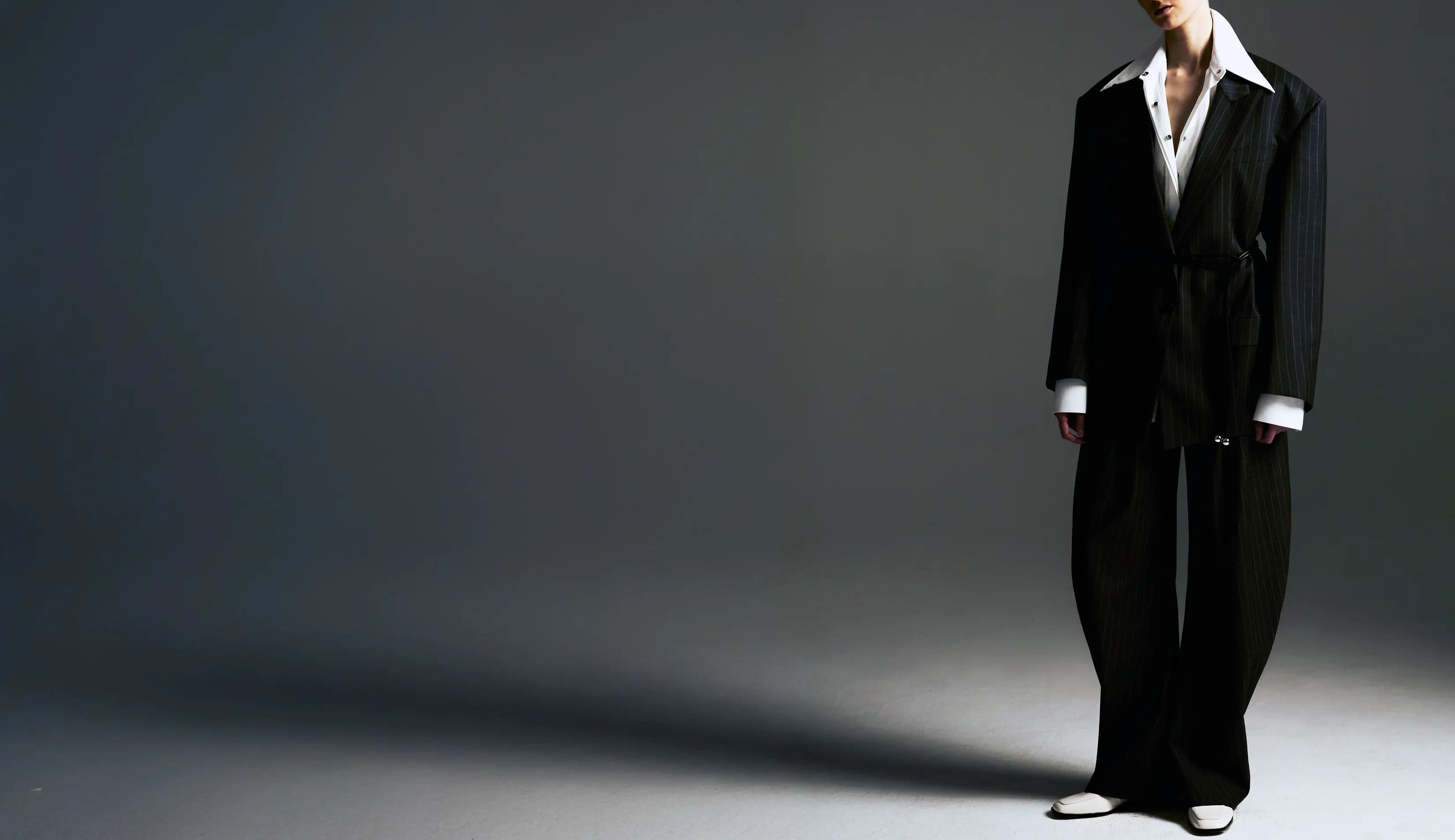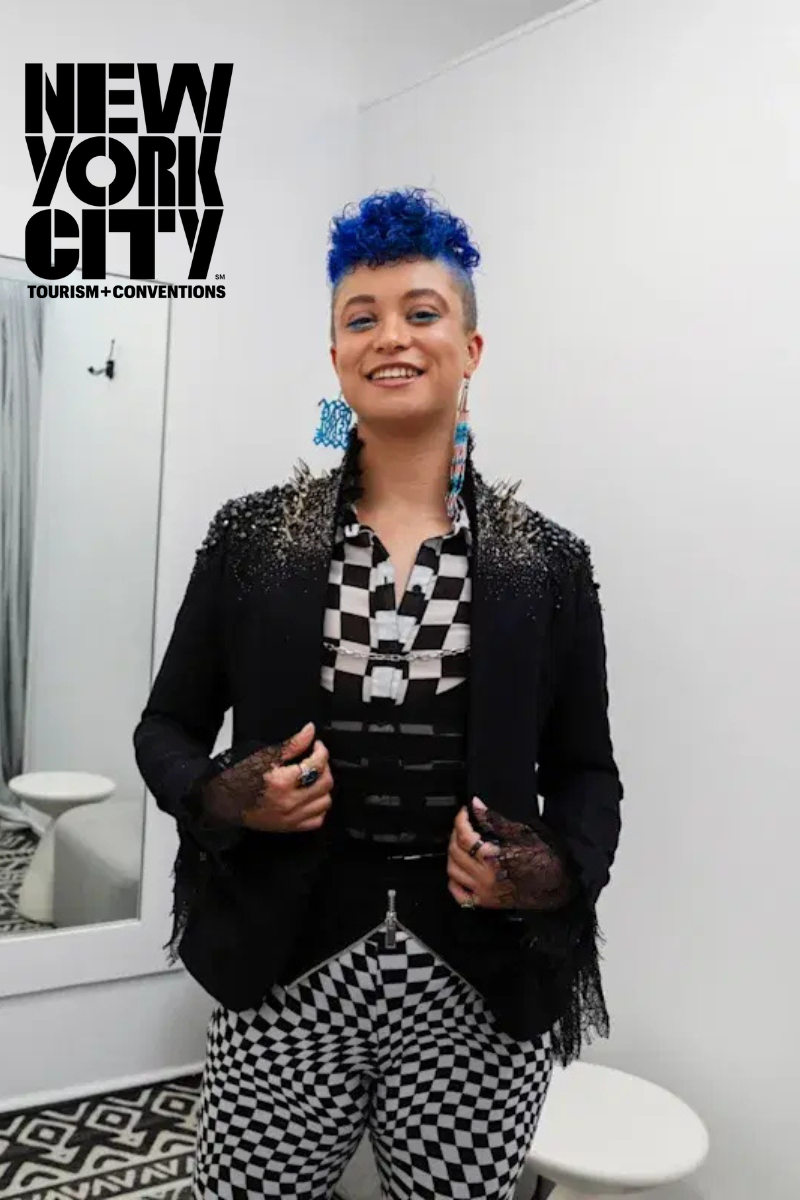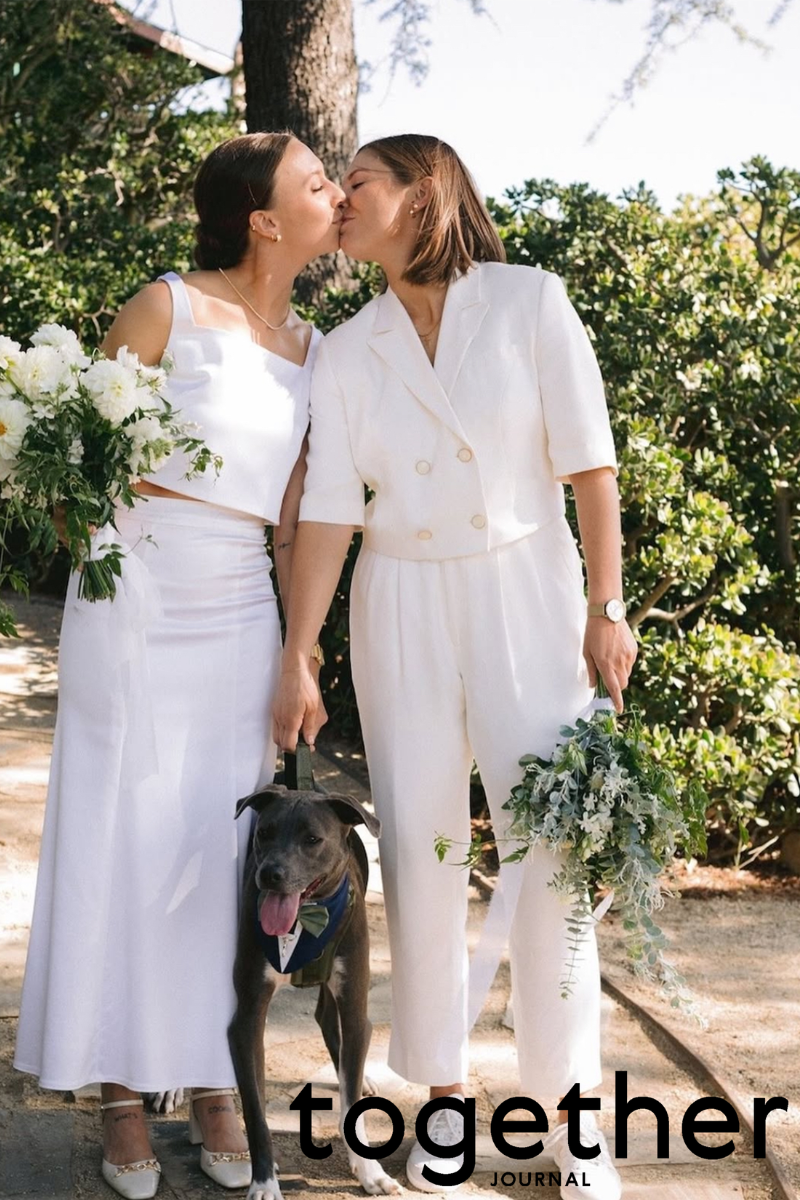The Architecture of Authentic Recognition
Business recognition typically demands conventional performance—traditional metrics, predictable categories, easily quantifiable achievements. Dagne Dover's approach to industry leadership contradicts this artificial framework, much like co-founder Melissa Mash's refusal to separate cultural representation from business excellence. The Gold House A100 recognition, featuring Mash in The Tailory's Hand-Painted Pinstripe Suit, documents this philosophical alignment between authentic leadership and sartorial precision.
The styling choice reveals an executive who has discovered the profound difference between business performance and genuine cultural impact. When Mash builds companies that transform industry standards while supporting community advancement, her choice to wear The Tailory demonstrates alignment between entrepreneurial vision and design excellence that serves authentic self-expression.
Gold House's selection of Mash for A100 recognition demonstrates sophisticated understanding of how authentic business leadership translates through cultural impact measurement. The featured achievement showcases how successful AAPI executives choose brands that reflect their values—supporting companies that prioritize technical excellence and cultural authenticity over trend-driven fashion.
Cultural Navigation Through Entrepreneurial Memory
The pinstripe suit selection represents more than aesthetic choice—it embodies cultural dialogue between traditional business authority and contemporary identity expression. Hinnah's positioning among A100 honorees creates perfect demonstration of fashion supporting rather than overshadowing authentic achievement narrative.
Each pinstripe functions as precision visualization, transforming abstract business concepts into tangible executive presence. The suit wearer becomes walking embodiment of entrepreneurial excellence, where technical craftsmanship meets cultural representation. This approach reflects The Tailory's broader mission of creating fashion that empowers while it inspires, transforming complex business achievements into accessible design language.
Technical innovation within the suit's construction requires understanding both traditional executive wear engineering and contemporary identity expression principles. The patterns must accommodate business functionality while maintaining visual clarity of cultural representation—synthesis that serves both professional performance and authentic self-expression.

The Representative Extension of Business Vision
Mash's journey with Dagne Dover into industry recognition reveals how authentic cultural leadership can extend through strategic brand partnerships. The executive's commitment to business excellence while embracing cultural representation demonstrates philosophical alignment with companies like The Tailory that prioritize community impact alongside technical innovation.
The A100 styling choice integrates personal achievement with brand alignment, paralleling successful leadership decisions that honor individual excellence while supporting businesses that reflect personal values. The approach rejects false binaries between individual success and collective advancement, creating synthesis that serves authentic cultural progress through conscious consumption choices.
This integration appears visually through the suit's hybrid construction. Traditional executive authority meets contemporary cultural expression, resulting in garments that achieve operational benefits of business attire while accommodating authentic identity representation requirements.
Technical Innovation Serving Cultural Truth
The construction innovations incorporated into The Tailory's Hand-Painted Pinstripe Suit demonstrate how technical advancement can serve authentic cultural expression rather than imposing artificial business requirements. Traditional executive wear often creates compromise between professional authority and personal identity. The Tailory's pattern development addresses these issues through precision construction that maintains business integrity while accommodating both traditional executive requirements and contemporary cultural expression.
The hand-painted detail selection requires sophisticated understanding of how artistic elements interact with professional garment functionality. The Tailory's construction ensures each decorative element maintains visual distinctiveness while contributing to unified executive narrative that supports rather than diminishes professional authority.

Future-Facing Tradition in Leadership and Fashion
The Gold House A100 recognition reveals an organization that has learned to balance immediate achievement celebration with long-term cultural documentation. The recognition's approach to featuring business leaders represents evolution from traditional individual promotion toward authentic cultural dialogue that serves educational rather than purely promotional purposes.
The Tailory's design philosophy operates through cultural time horizons, creating pieces intended to support leaders across multiple professional contexts while incorporating innovations that improve cultural representation. This integration of business heritage and cultural innovation appears throughout The Tailory's approach, where traditional executive aesthetics meet contemporary identity consciousness.
Conclusion: Recognition as Cultural Achievement
The Gold House A100 recognition featuring Melissa Mash ultimately demonstrates how authentic cultural leadership requires strategic partnerships to achieve lasting community impact. The styling choice's success stems from alignment between entrepreneurial excellence, cultural representation, and fashion innovation—creating visual narrative that enhances rather than diminishes each component's authentic contribution.
This synthesis of business achievement, cultural advancement, and design excellence provides a model for contemporary leadership recognition that transcends traditional individual categorization. Mash's ability to maintain business precision while embracing cultural representation through strategic brand choices parallels successful innovations that honor entrepreneurial heritage while supporting community advancement.
The A100 feature documents a moment when business success, cultural recognition, and fashion excellence converge around shared values of authenticity, precision, and representative courage. Whether this represents temporary alignment or sustainable direction depends on the business community's willingness to prioritize long-term cultural impact through conscious brand partnerships.
Mash's styling choice demonstrates that authentic leadership requires business competence, cultural awareness, and strategic alignment rather than mere individual opportunism. The Tailory's Hand-Painted Pinstripe Suit provides physical evidence of how the right design approach can support authentic cultural expression while maintaining professional authority—fashion as tool for genuine community advancement through executive example.




